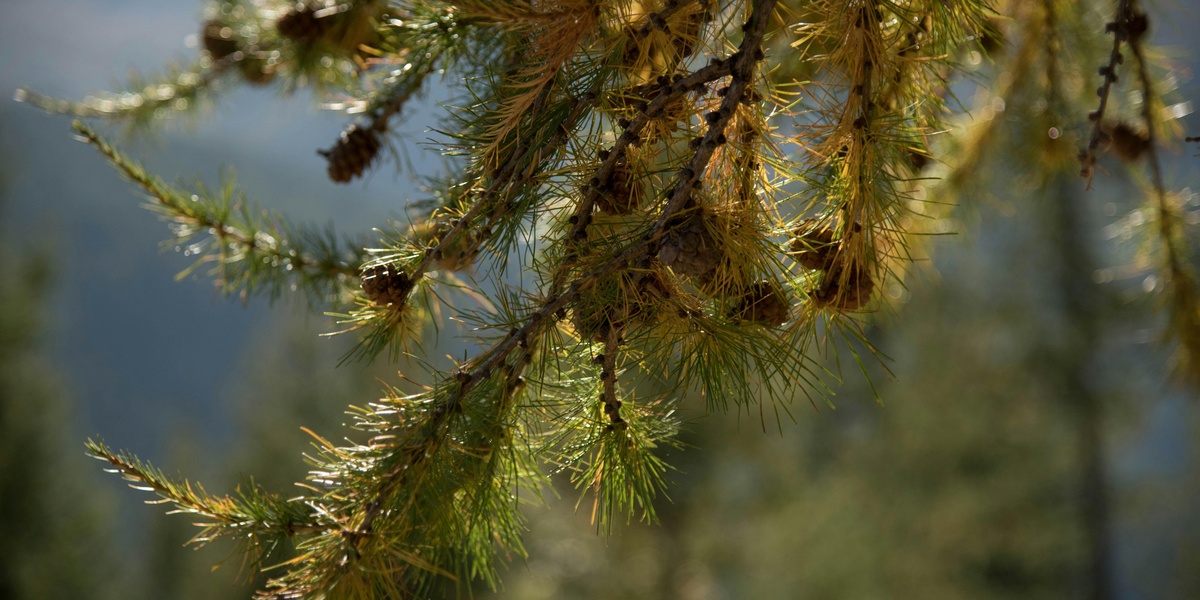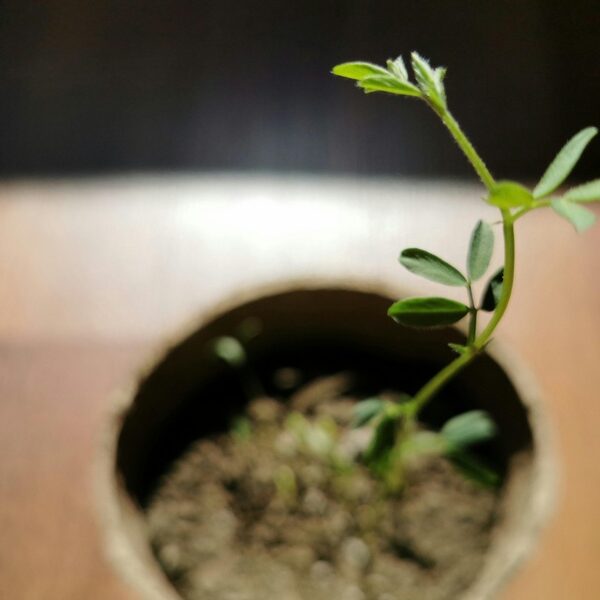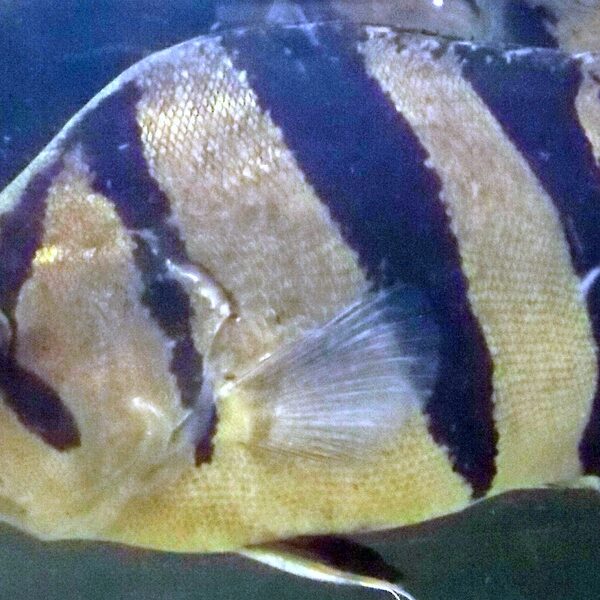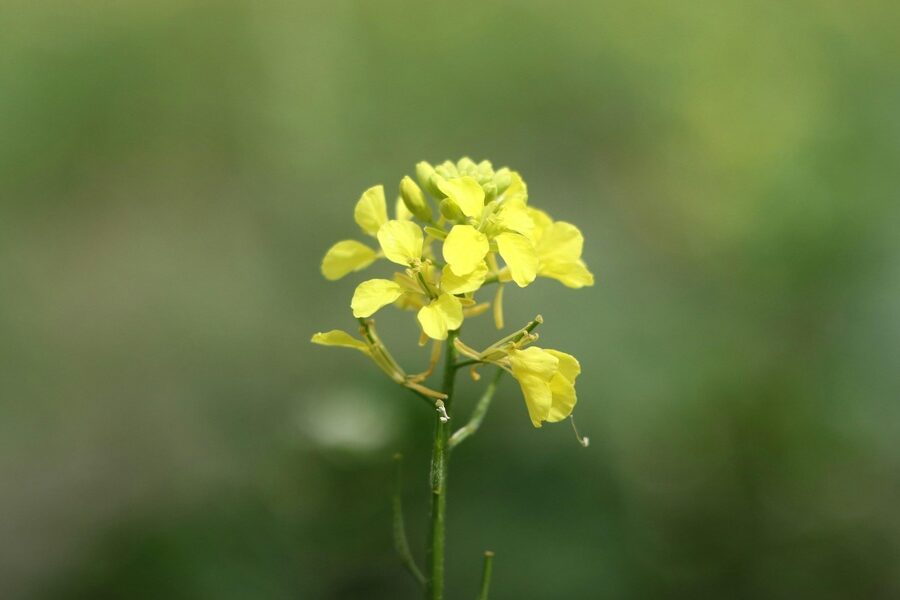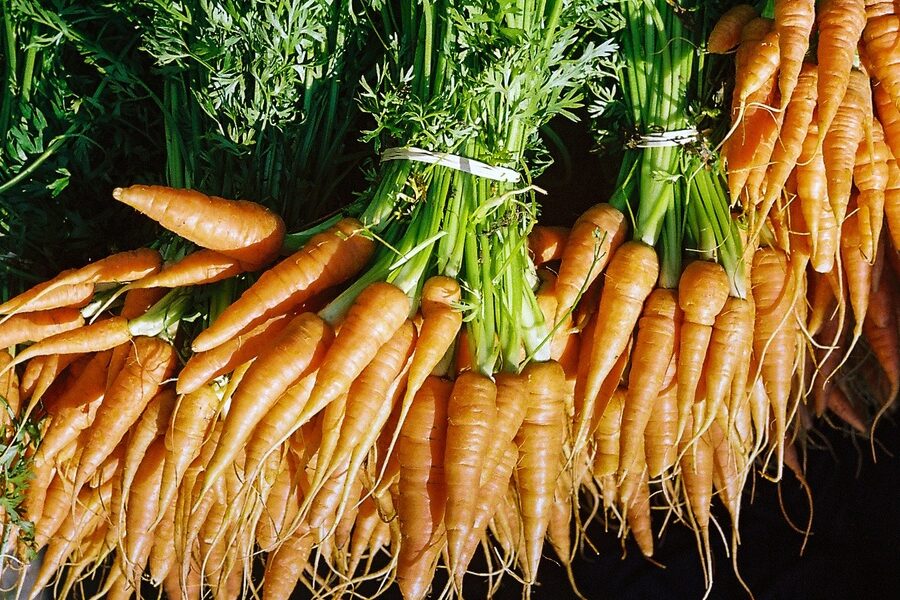Latvia’s mix of coastline, bogs, forests and meadows supports a rich array of native and naturalized plants. Seasonal changes and small-scale habitat variety mean you can move from coastal dunes to spruce woods and meet very different species within a short drive.
There are 40 Plants of Latvia, ranging from Bilberry to Wood anemone. For each one you’ll find below the Scientific name,Status,Habitat / Where found — the full list is below.
How were these plants selected and categorized?
The entries are drawn from national flora surveys, regional field guides and conservation lists to represent common, regionally important and at-risk species; each row is organized by Scientific name, conservation Status and typical Habitat / Where found so you can quickly see where and how to spot them.
When and where is the best time to see these species in Latvia?
Timing depends on species: spring is ideal for woodland ephemerals like Wood anemone, midsummer for berries and meadow flowers such as Bilberry; use the Habitat / Where found notes below to pick coastal, bog or forest sites and visit during peak flowering or fruiting.
Plants of Latvia
| Name | Scientific name | Status | Habitat / Where found |
|---|---|---|---|
| Scots pine | Pinus sylvestris | Native | Dry sandy soils and forests throughout Latvia |
| Norway spruce | Picea abies | Native | Moist, cool forests, widespread in central and eastern Latvia |
| Silver birch | Betula pendula | Native | Open forests, clearings, roadside, widespread across Latvia |
| Downy birch | Betula pubescens | Native | Wet forests, peatlands and moist lowlands, northern and eastern Latvia |
| English oak | Quercus robur | Native | Rich mixed forests, river valleys, scattered ancient trees |
| European aspen | Populus tremula | Native | Mixed woodlands, clearings, disturbed ground, common countrywide |
| Goat willow | Salix caprea | Native | Wet meadows, riverbanks, forest margins across Latvia |
| Hazel | Corylus avellana | Native | Woodland edges, hedgerows, calcareous soils, scattered nationwide |
| Rowan | Sorbus aucuparia | Native | Woodland edges, hillsides, gardens, common in Latvia |
| Common juniper | Juniperus communis | Native | Dry heaths, coastal dunes, rocky outcrops; scattered populations |
| Heather | Calluna vulgaris | Native | Heaths, dry acidic soils, coastal dunes, northern Latvia |
| Bilberry | Vaccinium myrtillus | Native | Acidic forests and heaths, common in uplands and pine woods |
| Lingonberry | Vaccinium vitis-idaea | Native | Coniferous forests, rocky ground, more common in north and east |
| Bog bilberry | Vaccinium uliginosum | Native | Peat bogs, raised bogs and wet heaths, northern Latvia |
| Common reed | Phragmites australis | Native | Freshwater wetlands, lake margins, riverbanks and coastal lagoons |
| Reedmace/Great bulrush | Typha latifolia | Native | Shallow ponds, ditches, marshes and lake margins nationwide |
| Marsh marigold | Caltha palustris | Native | Wet meadows, stream banks, floodplains, early spring wetlands |
| Round-leaved sundew | Drosera rotundifolia | Native | Acid peat bogs, wet heaths and fens with open, nutrient-poor conditions |
| Bog rosemary | Andromeda polifolia | Native | Open bog pools, hummocks and acidic peatlands, northern Latvia |
| Cloudberry | Rubus chamaemorus | Native | Peat bogs, tundra-like mires, northern and raised bogs |
| Sea buckthorn | Hippophae rhamnoides | Native/Naturalized | Coastal dunes, sandy beaches, some inland stands along Baltic shorelines |
| Common dandelion | Taraxacum officinale | Introduced/Naturalized | Lawns, roadsides, meadows and disturbed ground nationwide |
| Oxeye daisy | Leucanthemum vulgare | Native | Meadows, roadside verges, pastures and open grasslands across Latvia |
| Common yarrow | Achillea millefolium | Native | Grasslands, roadside verges, meadows and disturbed soils countrywide |
| Meadow buttercup | Ranunculus acris | Native | Meadows, pastures and roadside verges in damp to dry grasslands |
| Greater plantain | Plantago major | Native/Naturalized | Compact soils, paths, lawns, urban areas and fields nationwide |
| Lily-of-the-valley | Convallaria majalis | Native | Shady deciduous woodlands, hedgerows and older parks across Latvia |
| Wood anemone | Anemone nemorosa | Native | Deciduous woodland floors, clearings and hedgerows, especially in spring |
| Common spotted orchid | Dactylorhiza fuchsii | Native/Protected | Meadows, open woods, calcareous fens and roadside verges |
| Broad-leaved marsh orchid | Dactylorhiza majalis | Native/Protected | Wet meadows, marsh edges and calcareous fens in lowlands |
| Lesser butterfly-orchid | Platanthera bifolia | Native/Protected | Damp meadows, woodland edges and calcareous grasslands |
| Coltsfoot | Tussilago farfara | Native | Disturbed ground, riverbanks, roadsides and early-spring flushes |
| Common nettle | Urtica dioica | Native | Nitrogen-rich soils, hedgerows, gardens, riverbanks and disturbed sites |
| Hawthorn | Crataegus monogyna | Native | Hedgerows, woodland edges, pastures and roadsides countrywide |
| Norway maple | Acer platanoides | Native | Mixed forests, parks and urban areas, common in lowlands |
| Bog cranberry | Vaccinium oxycoccos | Native | Sphagnum bog pools and wet peatlands, northern and central Latvia |
| White water lily | Nymphaea alba | Native | Shallow lakes, ponds and slow-moving water bodies across Latvia |
| Elder | Sambucus nigra | Native | Hedgerows, woodland margins, disturbed ground and roadsides countrywide |
| Bird cherry | Prunus padus | Native | Wet woodlands, riverbanks and hedgerows, common countrywide |
| Sweet gale | Myrica gale | Native | Acidic bog margins, wet heaths and raised bog edges |
Images and Descriptions
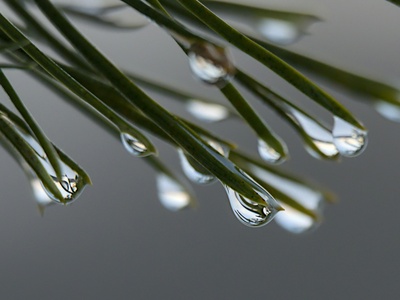
Scots pine
Tall evergreen conifer with flaky orange-brown bark and paired needles. Often forms pure stands on dry, nutrient-poor soils and coastal dunes. Produces persistent cones; ecologically and economically important, with a characteristic open crown and resinous scent.
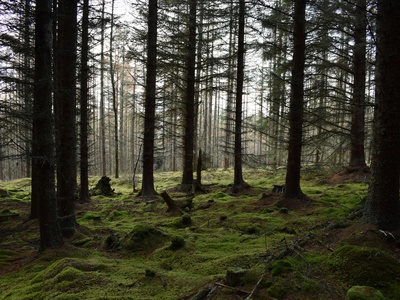
Norway spruce
Large evergreen with drooping branchlets and hanging cones; dark green, stiff needles arranged radially. Common in mixed and pure stands on richer soils and valleys. Important for timber; identifiable by conical shape and flaky bark.
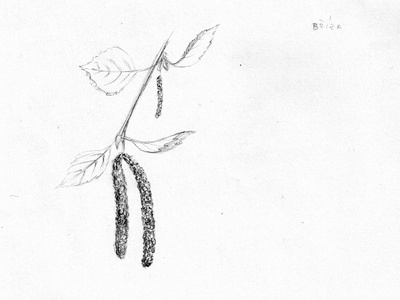
Silver birch
Medium deciduous tree with white peeling bark and triangular toothed leaves. Pioneer species of open ground, flowers in spring as catkins. Light-seeking and fast-growing, often marks young woodland and regenerating forest edges.
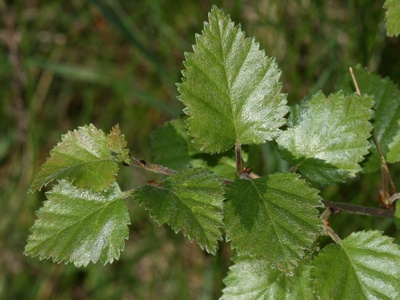
Downy birch
Deciduous tree with greyish bark, rounded crown and hairy twigs; leaves similar to silver birch but softer. Prefers wetter, acidic soils and peat bog edges. Spring catkins and golden autumn foliage are notable.

English oak
Large broadleaf tree with lobed leaves and stout acorns. Long-lived and ecologically significant, supporting many insects and lichens. Often found as isolated veteran trees in parks, hedgerows and fertile lowland forests.
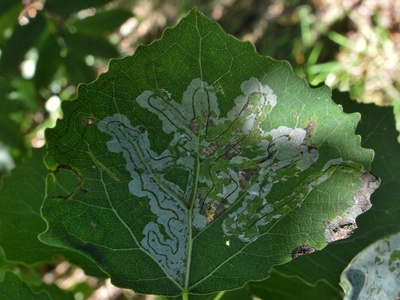
European aspen
Medium tree with fluttering round leaves on flattened petioles that tremble in the wind. Spreads via root suckers to form groves. Early spring catkins and pale bark are characteristic; tolerant of poor soils and disturbance.
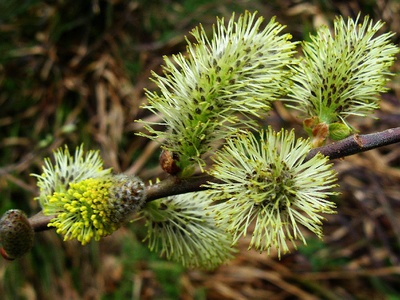
Goat willow
Deciduous shrub or small tree with rounded leaves and decorative catkins in early spring. One of earliest flowering willows, important nectar source for bees. Produces hairy capsules releasing wind-dispersed seeds in late spring.
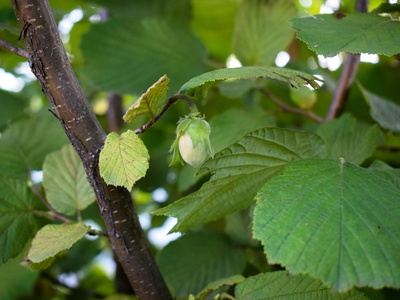
Hazel
Multi-stemmed shrub producing distinctive edible nuts (hazelnuts) and male catkins. Grows in coppiced or shaded understory and hedgerows. Leaves roundish and softly hairy; important for wildlife and traditional coppicing.
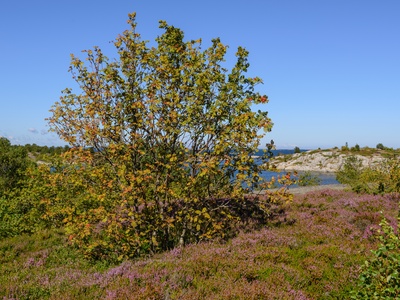
Rowan
Small tree with pinnate leaves and clusters of bright orange-red berries in autumn. Attractive spring flowers and vivid autumn color; berries feed birds and were traditionally used for preserves and folklore.
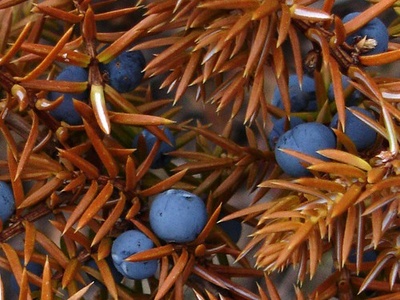
Common juniper
Evergreen shrub with needle-like leaves and berry-like cones (juniper “berries”). Slow-growing and drought-tolerant, often forming low mats or shrubs on poor soils. Fruit used as spice; populations locally sparse and ecologically valuable.

Heather
Low evergreen shrub with small scale-like leaves and densely packed pinkish-purple bell flowers in late summer. Dominant on acidic heaths and bog edges; provides food and habitat for insects, and creates characteristic purple bloom landscapes.

Bilberry
Low shrub with glossy leaves and edible dark blue berries in summer. Prefers acidic, well-drained soils under open canopy. Important food for wildlife and humans; berries used fresh or preserved and have a wild, tart flavor.
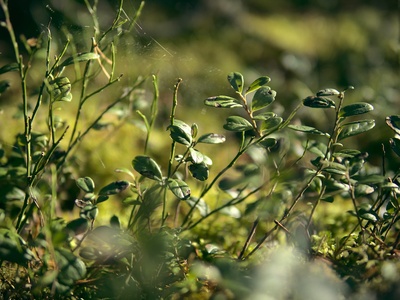
Lingonberry
Evergreen dwarf shrub with small leathery leaves and red edible berries in autumn. Tolerant of thin acidic soils and shade; berries are tart and widely used in Latvian cuisine and preserves.

Bog bilberry
Dwarf shrub with pale blue edible berries similar to bilberry but paler. Prefers wet, acidic peatlands and open bog pools. Leaves are longer and berries ripen midsummer; an indicator of healthy peat ecosystems.
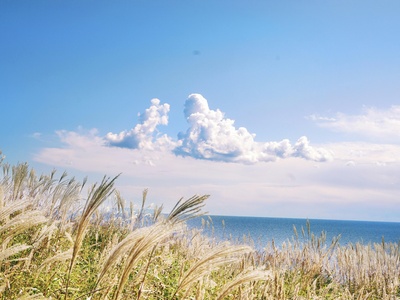
Common reed
Tall perennial grass forming dense reedbeds with feathery flower heads in late summer. Important for wetland structure and bird habitat, often dominant along shallow lake shores and slow rivers; can spread aggressively.
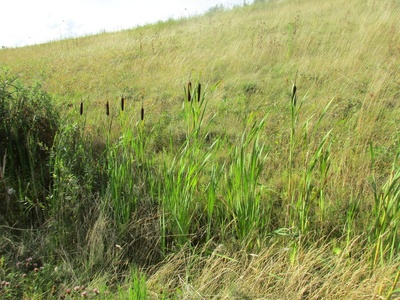
Reedmace/Great bulrush
Robust wetland perennial with tall leaves and distinctive brown sausage-like seed heads. Flowers in early summer; seeds disperse on fluffy down. Forms dense stands in nutrient-rich shallow water and marshy ground.

Marsh marigold
Low perennial with glossy kidney-shaped leaves and bright yellow buttercup-like flowers in spring. One of the earliest bloomers in wet sites, carpeted alongside willows and sedges after snowmelt.
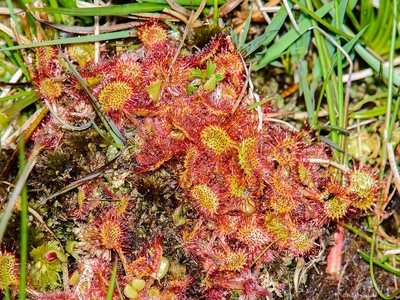
Round-leaved sundew
Small carnivorous plant with sticky, glandular leaves that trap insects; delicate pinkish flowers on stalks in summer. Survives in nutrient-poor peat by digesting insects; characteristic of intact bog habitats.
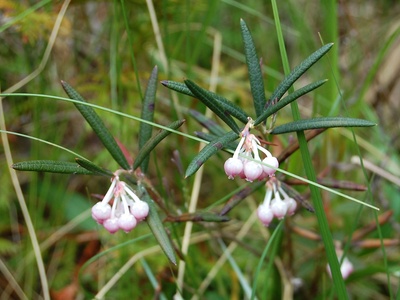
Bog rosemary
Low evergreen shrub with narrow, glossy leaves and nodding bell-shaped pink flowers. Grows on sphagnum hummocks in oligotrophic bogs; leaves are toxic but plant adds delicate color to bog landscapes in spring.

Cloudberry
Low dioecious herb producing amber-orange edible berries in mid-summer. Prefers acidic peat bogs and open sphagnum-dominated mires. Berries are highly valued locally and considered a specialty wild fruit with a unique tart-sweet flavor.

Sea buckthorn
Spiny shrub with silvery leaves and bright orange edible berries in autumn. Stabilizes dunes and tolerates salt spray; berries rich in vitamin C and used in juices and oils. Often planted but also occurs naturally on coasts.

Common dandelion
Rosette-forming perennial herb with bright yellow composite flowers that turn into white seedheads. Flowers most of the year in mild seasons; prolific seed dispersal by wind makes it ubiquitous in urban and rural habitats.

Oxeye daisy
Perennial herb with white ray florets and yellow disk center, blooming in summer. Tolerant of dry meadows and light grazing; common in traditional hayfields and valued for its cheerful appearance in summer landscapes.
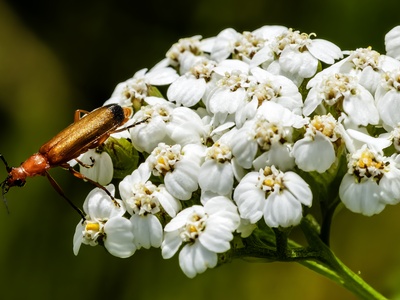
Common yarrow
Perennial herb with feathery leaves and flat-topped clusters of small white to pinkish flowers. Aromatic and long-blooming through summer; historically used in folk medicine and tolerant of a wide range of soils.
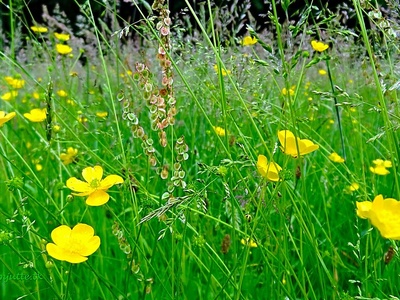
Meadow buttercup
Upright perennial with deeply divided leaves and glossy yellow flowers in late spring and early summer. Common in hay meadows, can be mildly toxic to livestock when fresh; shows bright patches in flowering meadows.
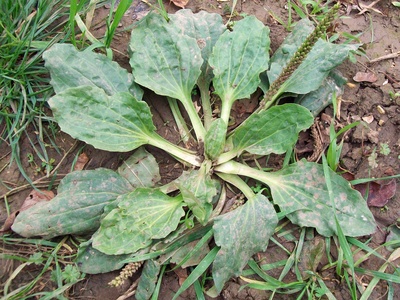
Greater plantain
Low rosette-forming perennial with broad lanceolate leaves and tall spike-like inflorescences. Tolerant of trampling and compacted soils; long used as a folk remedy for skin and minor wounds and easily recognised in urban green spaces.
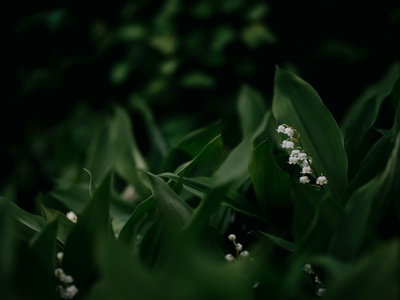
Lily-of-the-valley
Low, spring-flowering perennial with pairs of glossy leaves and fragrant drooping white bell flowers. Spreads by rhizomes to form carpets under trees; highly toxic despite traditional garden use, blooms in May.
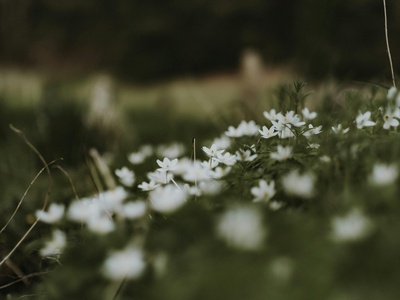
Wood anemone
Delicate spring-flowering perennial with white or pink-tinged star-like flowers above divided leaves. Forms carpets in spring before canopy leaf-out; disappears aboveground in summer, a classic sign of ancient woodland.

Common spotted orchid
Perennial terrestrial orchid with spotted leaves and dense spikes of lilac-pink speckled flowers. Variable in form and often locally protected; blooms in early summer and indicates semi-natural grassland or fen habitats.

Broad-leaved marsh orchid
Robust terrestrial orchid with broad leaves and tall spikes of pink-purple flowers. Favors damp, grazed meadows and fens; subject to protection due to habitat loss and attractive to orchid enthusiasts.
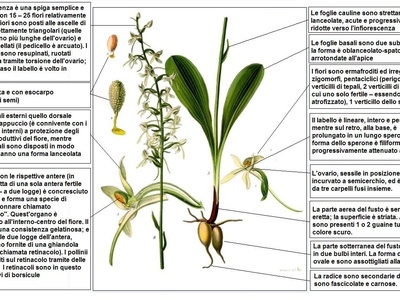
Lesser butterfly-orchid
Tuberous orchid with narrow leaves and fragrant white flowers with long nectar spurs at night. Pollinated by moths; uncommon and protected in many areas, blooming in early to mid-summer and favoring traditional meadow management.
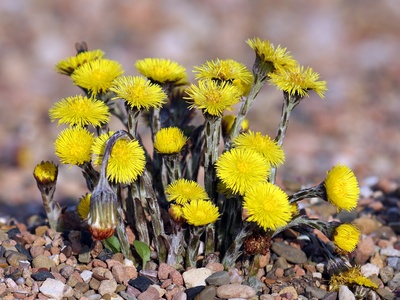
Coltsfoot
Early spring perennial with bright yellow dandelion-like flowers appearing before the leaves. Leaves large and hoof-shaped appear later; often a pioneer on bare or compacted soils and recognized by its early bloom.
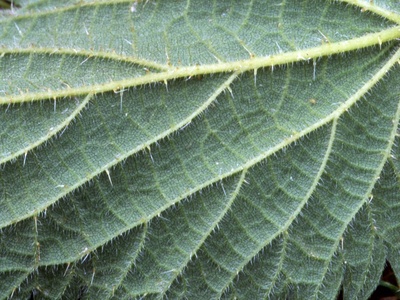
Common nettle
Tall perennial herb with serrated leaves and drooping clusters of tiny greenish flowers; stinging hairs deter handling. Thrives in fertile ground, supports many insects and butterflies, and is used in local cuisine and herbal remedies when cooked.
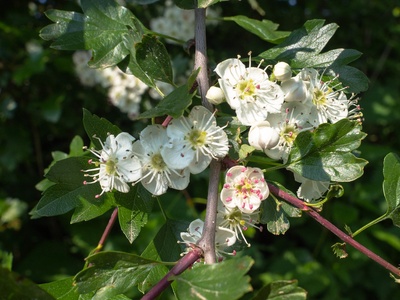
Hawthorn
Small tree or shrub with lobed leaves, clusters of white spring flowers and red haws in autumn. Dense thorny growth provides excellent bird nesting habitat; traditional hedgerow species with cultural importance.
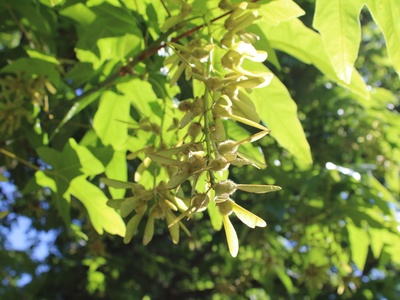
Norway maple
Deciduous tree with broad palmate leaves turning yellow in autumn and distinctive winged samaras. Tolerant of varied soils and urban conditions; large canopy tree often used in avenues and mixed deciduous stands.

Bog cranberry
Trailing dwarf shrub producing small red cranberries in late summer. Favors open bog pools and hummocks; tart berries are harvested locally. Leaves small and glossy, plant indicates healthy acidic peatland conditions.

White water lily
Floating aquatic with round waxy leaves and large white fragrant flowers that open in daylight. Roots in sediment; creates iconic summer water-surface displays and provides shelter for aquatic wildlife.
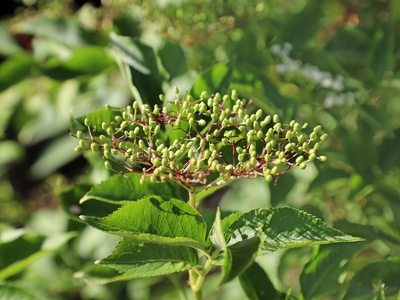
Elder
Multi-stemmed shrub with pinnate leaves, flat clusters of showy white flowers in late spring and dark purple berries in late summer. Berries and flowers used traditionally in jams and syrups after processing.
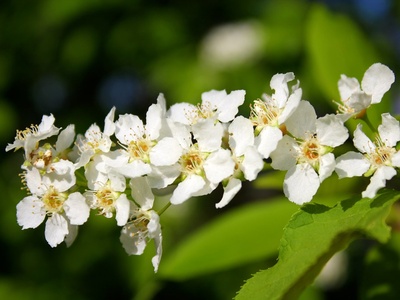
Bird cherry
Small tree with racemes of fragrant white flowers in spring followed by small dark cherries. Bark dark and fissured; prefers moist soils and often marks river corridors and damp lowland woodlands.

Sweet gale
Aromatic shrub with narrow, serrated leaves and catkin-like flowers; grows on nutrient-poor wet soils and hummocks. Historically used for flavoring and as a moth repellent; an indicator species of intact bog/peat habitats.
